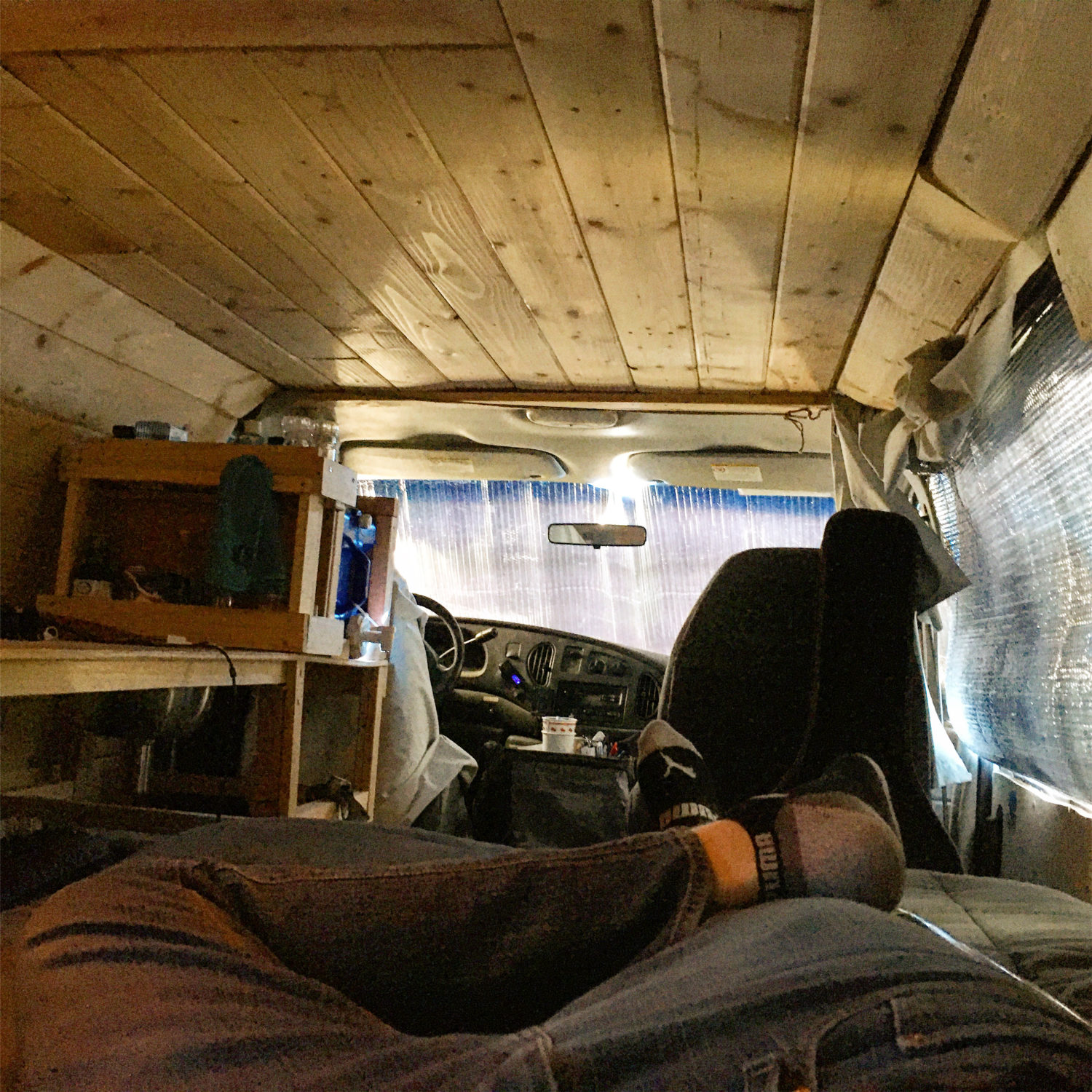More often than not, I try to use my car key to unlock my front door when I get home from work. It takes me a second to remember it’s the plain silver one, not the long one with the black rubber grip. Until a month ago, my house and car keys were one and the same.
For the last two years, as a reporter in the wealthy suburbs of Los Angeles, I lived in a Ford Econoline 250. I was working for a local newspaper in the Conejo Valley area, where I grew up, and housing being what it is in Southern California, the van presented the best financial choice I had at the time.
Journalism has fallen victim to the same stagnating wages that are affecting Americans everywhere.
Between 2004 and 2020, 1,800 communities lost their local news outlet. There were 26% fewer news jobs in 2020 than there were in 2008. If that trend continues, local news will be dead by 2070.
I’m one of the thousands of people who have responded to the challenge of living in 21st century America by choosing to become houseless.
I took a job with The Acorn in 2017, making around $37,000 — enough that I could pay my part on a three-bedroom rental I shared with two roommates about an hour away from the office.
I’ve always been pretty frugal but between rent, gas, bills and other necessities, I was lucky to save $150 a month. Most times it was a matter of moving money between accounts and waiting for payday while the rent check cleared.
With the end of our lease approaching in 2019, my housemates made plans to move in with their respective partners. I had the choice to rent an apartment I couldn’t afford or rent a room in someone else’s house, which would have offered even less freedom than the van. I once found roommates on Craigslist but that ended disastrously after three months and I decided not to try again.
Social media has glamorized #vanlife. This was not that. I didn’t have endless funds to sink into the project. Mine was not an Instagram-ready apartment on wheels. Armed with only a circular saw and a power drill, I put my eighth-grade woodshop skills to work and made a home. All told, the van cost probably $10,000 over two years, but I went from being lucky to save $150 a month to saving $900 a month without even trying.
My income/expense ratio was finally balanced enough that I could also stop selling my blood plasma twice a week (another way I’d been offsetting the cost of living in the Los Angeles area).
For two years, my home was 60 square feet of space with a four-foot height clearance. I had no running water or toilet. I cooked using a camp stove and a pocket knife. Solar panels on the roof provided lights and power for my phone and laptop.
Similar to musicians or actors who just haven’t made it yet, I think reporters (at least those early in their careers, like myself) tell ourselves stories as much as we do our readers. Yeah, the pay is crap and the hours are too long but who cares? We’re holding people accountable and telling the stories that really matter. Forget the White House, city hall is where everything happens!
In a way, I was doubling down on that romance. Not only was I making terrible money in the name of the truth, now I was a vagabond to boot. I left meetings and protests and slept at the beach, or stealth camped in local parks. I used hotel Wi-Fi to file stories.
There were a couple of times I attempted a stakeout to catch and interview a street artist who’d been brightening up the city in the early days of the COVID-19 pandemic, but it didn’t work out.
My lifestyle led to stories I would otherwise have missed, like why Malibu suddenly banned overnight parking at Zuma Beach (one of my favorite places to spend the night). I took an interest in reporting on homeless issues like how local governments were adapting to the Martin v. City of Boise decision.
I had a secret. I saw my cities in a way that others couldn’t. I wasn’t actually homeless, like the people homeowners would regularly panic were flooding into the suburbs from the city, so no one looked twice.
The fun moments were fleeting. It was the weekends, the Tuesday nights, the four-hour walks to kill time because I wanted to stand upright or it was too hot to be in the van that were more often the reality of my existence.
The sheriff’s station where I’d pick up blotter items once a week became my emergency bathroom because their lobby is open 24/7.
I left a memorial for two young boys who were killed in a hit and run and crawled into a van in which I could not stand to try to process the grief I’d witnessed and make a story of it.
I wrote about locals fighting against state measures that would add more homes to the area or protesting development projects, knowing the only way I’d ever call a property home is if I inherited it.
At one of the last events I covered, a Calabasas Chamber of Commerce luncheon, an elderly resident asked the city’s mayor during a Q&A session what’s being done for the city’s elderly residents who want to move out of their “multi-million dollar homes” into smaller dwellings and still stay in the city.
I would’ve been happy to trade him my little slice of Calabasas.
News analysts, reporters and journalists earn a mean wage of $66,000 annually, Bureau of Labor Statistics show. ZipRecruiter lists the average newspaper reporter’s salary much lower: $26,133.
The average home price in my coverage area, according to Zillow, was $1.3 million.
The news matters more than it ever has, but somehow there’s less and less money available to those who produce it. As grateful as I am for the experiences I had living unhoused, and the perspective it offered me, I worry about what will keep people interested in telling stories once the romance of the job has worn off.







